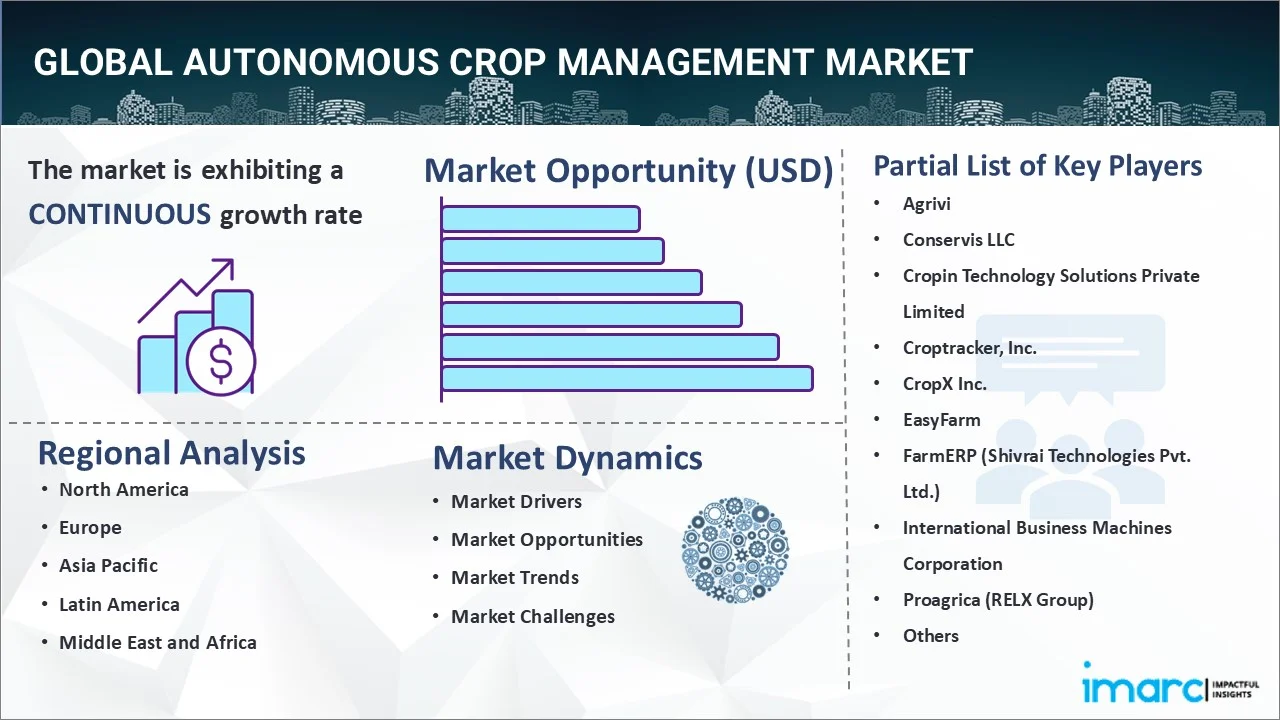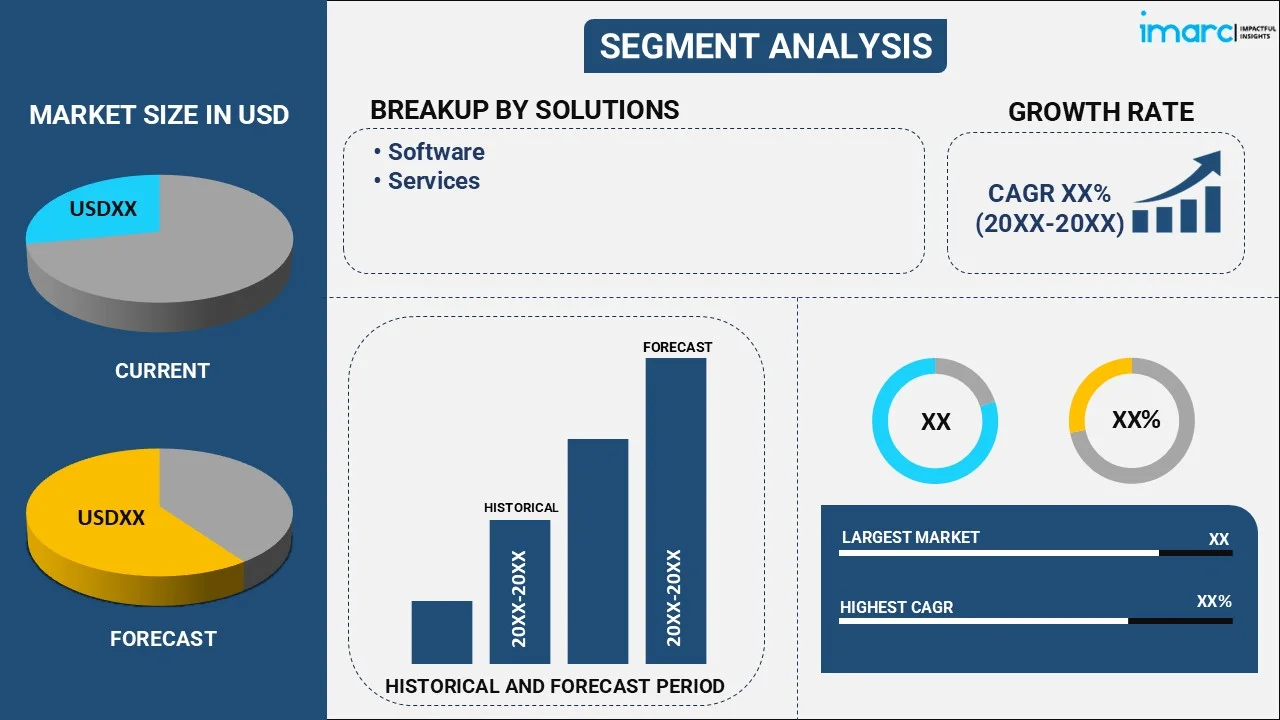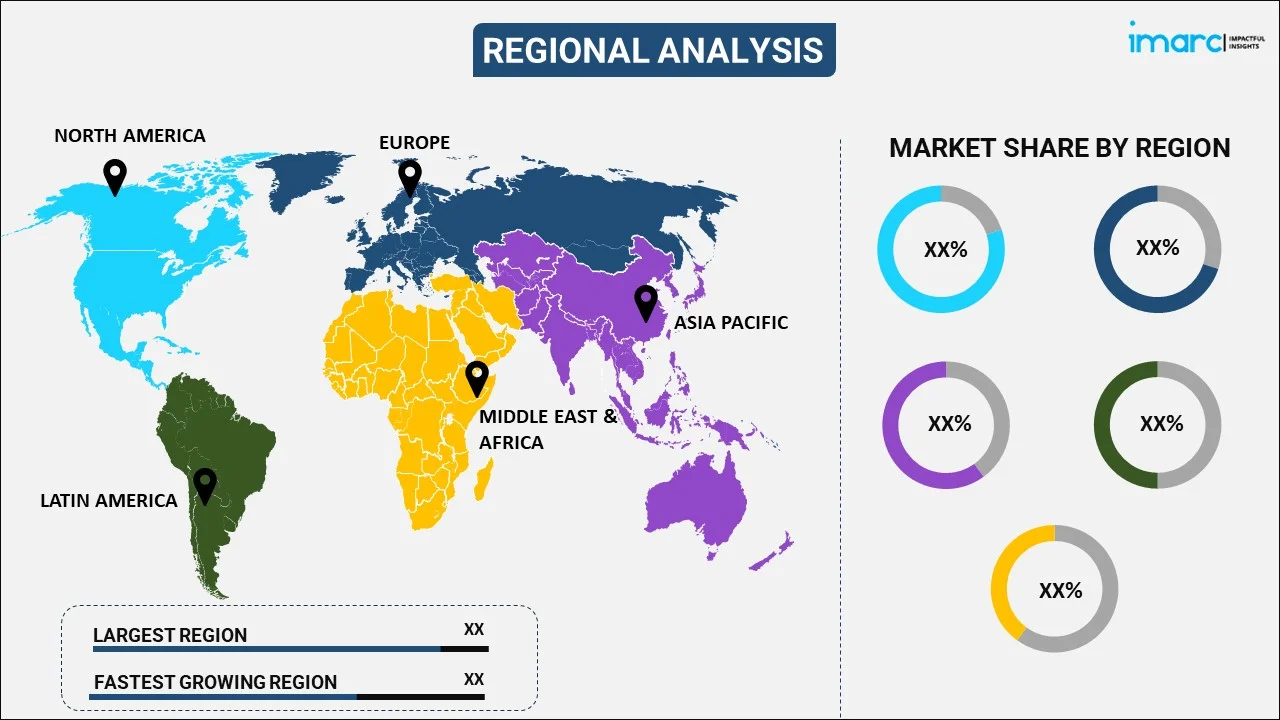
Autonomous Crop Management Market Report by Solution (Software, Services), Deployment (On-premises, Cloud-based), Application (Crop Tracking and Management, Weather Tracking and Forecasting, Irrigation Management, Labor and Resource Tracking, and Others), and Region 2025-2033
Autonomous Crop Management Market Overview:
The global autonomous crop management market size reached USD 2.3 Billion in 2024. Looking forward, IMARC Group expects the market to reach USD 7.8 Billion by 2033, exhibiting a growth rate (CAGR) of 14.69% during 2025-2033. The escalating demand for sustainable and efficient agricultural practices, integration of numerous advanced technologies, and rising global population and food security concerns are some of the major factors contributing to the growth of the market.
|
Report Attribute
|
Key Statistics
|
|---|---|
|
Base Year
|
2024 |
|
Forecast Years
|
2025-2033
|
|
Historical Years
|
2019-2024
|
| Market Size in 2024 | USD 2.3 Billion |
| Market Forecast in 2033 | USD 7.8 Billion |
| Market Growth Rate 2025-2033 | 14.69% |
Autonomous Crop Management Market Analysis:
- Major Market Drivers: There is an increase in the need for data-driven decision-making. This, coupled with growing environmental concerns, is offering a positive market outlook.
- Key Market Trends: Advancements in artificial intelligence (AI) and the Internet of Things (IoT) technologies and the rising focus on precision farming are stimulating the autonomous crop management market growth.
- Geographical Trends: North America exhibits a clear dominance, accounting for the largest market share owing to the increasing demand for enhanced crop productivity.
- Competitive Landscape: Some of the major market players in the industry are Agrivi, Conservis LLC, Cropin Technology Solutions Private Limited, Croptracker, Inc., CropX Inc., EasyFarm, FarmERP (Shivrai Technologies Pvt. Ltd.), International Business Machines Corporation, Proagrica (RELX Group), Raven Industries, Inc. (CNH Industrial), Topcon Corporation., among many others.
- Challenges and Opportunities: One of the key challenges hindering the market growth is data privacy and security. However, the rising demand for food products among people worldwide represents autonomous crop management market recent opportunities.

Autonomous Crop Management Market Trends:
Numerous advancements in AI and IoT technologies
The integration of artificial intelligence (AI) and the Internet of Things (IoT) is propelling the market growth. These advanced technologies can process vast amounts of data collected in real time and enable precise decision-making, such as optimizing irrigation schedules, assessing soil conditions, detecting crop diseases, and applying fertilizers with utmost accuracy, which is catalyzing the autonomous crop management demand. They also allow farmers to achieve higher crop yields, reduce resource wastage, and ensure sustainable farming practices. On 10 February 2022, Croptracker, Inc. released ‘Harvest Quality Vision 3.0 (HQV 3.0)’ to simplify and accurately predict the size of harvested produce. It utilizes off the shelf light detection and ranging (LiDAR) technology within iPads and iPhones to scan fruits of all sizes and shapes and returns highly accurate results in seconds. Croptracker's proprietary AI technology recognizes fruits in the field and sizes them accurately.
Rise in the adoption of precision agriculture
There is a rise in the adoption of precision agriculture practices among farmers as they are recognizing the value of data-driven and site-specific farming techniques to maximize their agricultural output. Autonomous systems facilitate targeted applications of farming inputs like water, fertilizers, and pesticides, on the basis of real time data analysis and crop requirements. This optimizes resource usage, reduces environmental impact, and improves crop quality. Furthermore, the increasing need to produce more food sustainably and efficiently for the ever-growing population worldwide is positively influencing the market. On 7 February 2022, Naïo Technologies, a developer of autonomous agricultural robots, launched its newest robot during the World Ag Expo 2022. Orio is a multi-crop/multi-task autonomous and high-precision robot designed for large vegetable production operations, which is 100% electric and helps growers to reduce their environmental impact.
Labor shortages and cost savings
Agricultural labor shortages are becoming widely prevalent in various regions worldwide. This scarcity of skilled workers is encouraging the agricultural sector to seek automated solutions. Farmers can streamline various labor-intensive tasks that reduce dependency on human labor. Additionally, the optimization of inputs through autonomous crop management aids in enhancing resource efficiency and cost reductions. Furthermore, companies are introducing autonomous systems that benefit in lowering these challenges. For instance, New Holland unveiled a new tractor class ‘T4 Electric Power’, the utility electric with autonomous features on 28 August 2023. It will address increased total cost ownership and labor shortage issues while delivering commitment to help individuals build more sustainable agriculture.
Autonomous Crop Management Market Segmentation:
IMARC Group provides an analysis of the key trends in each segment of the market, along with autonomous crop management market forecast at the global, regional, and country levels for 2025-2033. Our report has categorized the market based on solution, deployment, and application.
Breakup by Solution:

- Software
- Services
- Professional Services
- Managed Services
Software accounts for the majority of the market share
The report has provided a detailed breakup and analysis of the market based on the solution. This includes software and services (professional services and managed services). According to the report, software represented the largest segment.
Software is advanced applications and algorithms that utilize artificial intelligence (AI), machine learning (ML), and data analytics to process vast amounts of agricultural data. It analyzes real time inputs from various sources to monitor crop health, assess soil conditions, detect diseases, and optimize resource allocation. It provides farmers with actionable insights and automated decision-making and enables precise and efficient crop management practices. On 7 January 2022, Mahindra Tractors unveiled six new tractor models under the launched Yuvo Tech+ brand. Moreover, the Yuvo Tech + range comes with 12F (forward) + 3R (reverse) transmission technology, with Dual Clutch and 4WD and a 3-speed option (H-M-L) for optimal performance based on different soil types and agricultural applications.
Breakup by Deployment:
- On-premises
- Cloud-based
On-premises hold the largest share of the industry
A detailed breakup and analysis of the market based on the deployment have also been provided in the report. This includes on-premises and cloud-based. According to the report, on-premises accounted for the largest market share.
On-premises deployment means the installation and operation of the autonomous crop management software and hardware directly on the agricultural enterprise or own infrastructure of farmers. In this model, all data, algorithms, and processing take place locally, within the farm premises. It provides farmers with full control over their data and operations and ensures data privacy and security.
Breakup by Application:
- Crop Tracking and Management
- Weather Tracking and Forecasting
- Irrigation Management
- Labor and Resource Tracking
- Others
Crop tracking and management represents the leading market segment
The report has provided a detailed breakup and analysis of the market based on the application. This includes crop tracking and management, weather tracking and forecasting, irrigation management, labor and resource tracking, and others. According to the report, crop tracking and management represented the largest segment.
The rising need for enhanced crop monitoring and management drives the market growth, as farmers seek to optimize yields, detect early signs of diseases or nutrient deficiencies, and make data-driven decisions for targeted interventions to ensure healthy and high-quality crops. On 13 February 2024, John Deere and GUSS Automation introduced the world's first and only fully electric autonomous herbicide orchard sprayer, Electric GUSS. This fully electric and autonomous sprayer enables growers to control multiple sprayers from a remote source. The intelligent sprayer increases productivity and optimizes and upskill labor, enabling farming operations to meet their sustainability goals with lower emissions and enhanced application precision.
Breakup by Region:

- North America
- United States
- Canada
- Europe
- Germany
- France
- United Kingdom
- Italy
- Spain
- Others
- Asia Pacific
- China
- Japan
- India
- South Korea
- Australia
- Indonesia
- Others
- Latin America
- Brazil
- Mexico
- Others
- Middle East and Africa
North America leads the market, accounting for the largest autonomous crop management market share
The report has also provided a comprehensive analysis of all the major regional markets, which include North America (the United States and Canada); Europe (Germany, France, the United Kingdom, Italy, Spain, and others); Asia Pacific (China, Japan, India, South Korea, Australia, Indonesia, and others); Latin America (Brazil, Mexico, and others); and the Middle East and Africa. According to the report, North America represents the largest regional market for autonomous crop management.
In North America, the United States and Canada contribute to the widespread adoption of advanced agricultural technologies, which include AI and IoT, fueled by the elevating need for greater crop productivity and sustainability to meet the rising global food demands. In addition, key players in the North America region are introducing innovative technologies to grab the attention of a wider farmer base. On 8 April 2024, AGCO Corporation, an American agricultural machinery manufacturer headquartered in Duluth, Georgia, United States, launched ‘PTx’ a new brand representing its precision agriculture portfolio. It will support the future development and distribution of next-generation agriculture technologies for farmers and original equipment manufacturers (OEMs).
Competitive Landscape:
- The market research report has also provided a comprehensive analysis of the competitive landscape in the market. Detailed profiles of all major autonomous crop management companies have also been provided. Some of the major market players in the autonomous crop management industry include Agrivi, Conservis LLC, Cropin Technology Solutions Private Limited, Croptracker, Inc., CropX Inc., EasyFarm, FarmERP (Shivrai Technologies Pvt. Ltd.), International Business Machines Corporation, Proagrica (RELX Group), Raven Industries, Inc. (CNH Industrial), Topcon Corporation.
(Please note that this is only a partial list of the key players, and the complete list is provided in the report.)
- Companies are focusing on integrating high-resolution imaging technologies, such as hyperspectral and multispectral sensors on drones and satellites, which allows comprehensive crop monitoring on a large scale. These innovations empower farmers with detailed insights into plant stress, nutrient deficiencies, and pest infestations, facilitating targeted interventions to optimize crop health and yield, thereby increasing autonomous crop management market revenue. Furthermore, several key players are developing sophisticated autonomous machinery, such as robotic harvesters and intelligent precision planters, to ensure accurate and efficient crop management while minimizing labor requirements. The use of blockchain and IoT technologies has also gained traction, enhancing traceability, transparency, and efficiency in the supply chain, ensuring access to high-quality and sustainably produced agricultural products to individuals. Furthermore, they are introducing products that deliver high performance in the agriculture sector. On 31 August 2022, JCB launched new Fastrac 4000 and 8000 Series tractors with an all-new electronics infrastructure that delivers higher levels of performance and convenience to operators. These series have advanced precision agriculture technology and new automatic climate control air conditioning with solar load and temperature monitoring.
Autonomous Crop Management Market Recent Developments:
- 19 December 2023: Agtonomy, a San Francisco, CA-based software and services company specializing in advanced autonomous and AI solutions for agriculture, raised US$ 22.5 Million in Series A funding. The round was led by Momenta, with strategic partners including Doosan Bobcat North America and Toyota Ventures. The company intends to use the funds to accelerate the development of their offerings.
- 19 September 2023: SwarmFarm Robotics introduced a “dock and refill” feature for autonomous farm machinery. The new capability aims to decouple equipment size from productivity levels. The technology addresses issues like soil compaction and offers tailored farming solutions.
- 30 August 2022: Trimble signed a definitive agreement to acquire privately held Bilberry, a French technology company specializing in selective spraying systems for sustainable farming. These spraying solutions are ideal to help farmers address increasing weed resistance to herbicides.
Autonomous Crop Management Market Report Scope:
| Report Features | Details |
|---|---|
| Base Year of the Analysis | 2024 |
| Historical Period | 2019-2024 |
| Forecast Period | 2025-2033 |
| Units | Billion USD |
| Scope of the Report | Exploration of Historical Trends and Autonomous Crop Management Market Outlook, Industry Catalysts and Challenges, Segment-Wise Historical and Future Market Assessment:
|
| Solutions Covered |
|
| Deployments Covered | On-premises, Cloud-based |
| Applications Covered | Crop Tracking and Management, Weather Tracking and Forecasting, Irrigation Management, Labor and Resource Tracking, Others |
| Regions Covered | Asia Pacific, Europe, North America, Latin America, Middle East and Africa |
| Countries Covered | United States, Canada, Germany, France, United Kingdom, Italy, Spain, China, Japan, India, South Korea, Australia, Indonesia, Brazil, Mexico |
| Companies Covered | Agrivi, Conservis LLC, Cropin Technology Solutions Private Limited, Croptracker Inc., CropX Inc., EasyFarm, FarmERP (Shivrai Technologies Pvt. Ltd.), International Business Machines Corporation, Proagrica (RELX Group), Raven Industries Inc. (CNH Industrial), Topcon Corporation, etc. |
| Customization Scope | 10% Free Customization |
| Post-Sale Analyst Support | 10-12 Weeks |
| Delivery Format | PDF and Excel through Email (We can also provide the editable version of the report in PPT/Word format on special request) |
Key Questions Answered in This Report:
- How has the global autonomous crop management market performed so far, and how will it perform in the coming years?
- What are the drivers, restraints, and opportunities in the global autonomous crop management market?
- What is the impact of each driver, restraint, and opportunity on the market?
- What are the key regional markets?
- Which countries represent the most attractive autonomous crop management market?
- What is the breakup of the market based on the solution?
- Which is the most attractive solution in the autonomous crop management market?
- What is the breakup of the market based on the deployment?
- Which is the most attractive deployment in the autonomous crop management market?
- What is the breakup of the market based on the application?
- Which is the most attractive application in the autonomous crop management market?
- What is the competitive structure of the market?
- Who are the key players/companies in the market?
Key Benefits for Stakeholders:
- IMARC’s industry report offers a comprehensive quantitative analysis of various market segments, historical and current market trends, market forecasts, and dynamics of the autonomous crop management market from 2019-2033.
- The research report provides the latest information on the market drivers, challenges, and opportunities in the global autonomous crop management market.
- The study maps the leading, as well as the fastest-growing, regional markets. It further enables stakeholders to identify the key country-level markets within each region.
- Porter's five forces analysis assists stakeholders in assessing the impact of new entrants, competitive rivalry, supplier power, buyer power, and the threat of substitution. It helps stakeholders to analyze the level of competition within the autonomous crop management industry and its attractiveness.
- The competitive landscape allows stakeholders to understand their competitive environment and provides insight into the current positions of key players in the market.
Need more help?
- Speak to our experienced analysts for insights on the current market scenarios.
- Include additional segments and countries to customize the report as per your requirement.
- Gain an unparalleled competitive advantage in your domain by understanding how to utilize the report and positively impacting your operations and revenue.
- For further assistance, please connect with our analysts.
 Request Customization
Request Customization
 Speak to an Analyst
Speak to an Analyst
 Request Brochure
Request Brochure
 Inquire Before Buying
Inquire Before Buying




.webp)




.webp)












